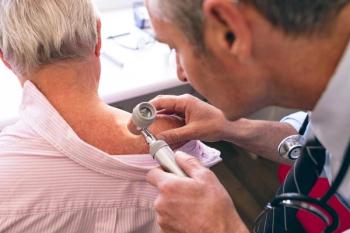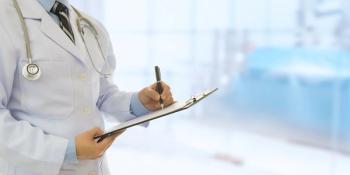
High-Intensity Laser Therapy Deemed Effective for Chronic Refractory Wounds, Research Says
High-intensity laser therapy (HILT) combined with wound dressing was superior to conventional wound care, according to a recent study.
High-intensity laser therapy (HILT) is a promising treatment for chronic refractory
According to the researchers, HILT does not only reduce wound size. It can also shorten wound healing time, accelerate inflammatory absorption, and increase collagen synthesis and tensile strength. “The therapeutic effects of HILT on chronic refractory wounds are significant and far more superior to those of conventional wound dressing,” the authors said.
Low-level laser therapy (LLLT) has been used on skin wounds, but it has unknown effects on chronic refractory wounds, which are wounds that cannot heal within 1-2 months with conventional treatment. LLLT, which uses low light energy, requires longer treatment sessions. HILT has been used in basic research and clinical rehabilitation practice. A major difference between the two is that HILT has more powerful beams that are irradiated, allowing for deeper penetration in a shorter amount of time.
The authors aimed to investigate the effectiveness of HILT on chronic refractory wounds by conducting a randomized control trial of 60 individuals in an outpatient wound care department at the Affiliated Jiangsu Shengze Hospital of Nanjing Medical University between August 2019 and June 2020. Patients were included if they were aged between 30 to 65, had full-thickness open wounds, or had a chronic wound.
One patient was excluded from the control group and 59 patients completed the study, with 29 in the control group and 30 in the treatment group.
The control group received standard wound care, including debridement, irrigation of the wound with normal saline solution, and application of dressing and sterile gauze. The patients were treated once a day, 3 days a week for 3 weeks.
For the treatment group, HILT was performed with a class 4 laser before covering the wound. Irradiation time was based on the size of the wound area, with the probe suspended 2 centimeters above the wound edge and scanning the wound area horizontally. HILT treatment was performed via a single application of laser therapy once a day, 3 days a week for 3 weeks.
Due to the nature of receiving laser therapy, participants were not blinded to their status. But researchers who assessed the wounds at baseline and during the study did not know which treatments the patients received, nor did the statisticians analyzing the data at the end.
All patients were assessed at a baseline and 1, 2, and 3 weeks after intervention using the Bates-Jensen Wound Assessment Tool (BWAT) and Pressure Ulcer Scale for Healing (PUSH).
The BWAT, which was the primary outcome, measures 13 wound characteristics; the PUSH assesses wound healing over a 3-week period.
At baseline, the BWAT scores between the control and treatment groups were not significantly different. Between baseline and week 3, the BWAT scores significantly improved for both the control (difference = –7.1; 95% CI, –9.1 to –5.2; P <.01) and treatment (difference = –10.7; 95% CI, –12.6 to –8.8; P <.01) groups. However, patients in the treatment group saw greater improvement (difference = –3.6; 95% CI, –6.3 to –0.8; P <.01).
The PUSH scores showed a similar pattern, with no significant difference between the control and treatment groups at baseline. There was significant improvement between baseline and week 3 for both the control (difference = –4.0; 95% CI, –5.9 to –2.0; P <.01) and treatment (difference = –9.3; 95% CI, –11.2 to –7.4; P <.01) groups. Again, improvement in patients in the treatment group was significantly greater (difference = –5.3; 95% CI, –8.1 to –2.6; P <.01).
These data indicated that HILT in combination with wound dressing was superior to conventional wound care for the treatment of chronic refractory wounds.
“HILT has been reported to have anti-inflammatory, analgesic and wound-healing effects, assisting in the management of patients with musculoskeletal disorders,” the authors write. “In addition, HILT can improve local blood circulation, blood vessel permeability and cell metabolism. Therefore, HILT can aid in the resolution of tissue inflammation and promote the repair of refractory wounds.”
Reference
Lu Q, Yin Z, Shen X, et al. Clinical effects of high-intensity laser therapy on patients with chronic refractory wounds: a randomised controlled trial. BMJ Open. Published online July 12, 2021. doi:10.1136/bmjopen-2020-045866
Newsletter
Stay ahead of policy, cost, and value—subscribe to AJMC for expert insights at the intersection of clinical care and health economics.













































